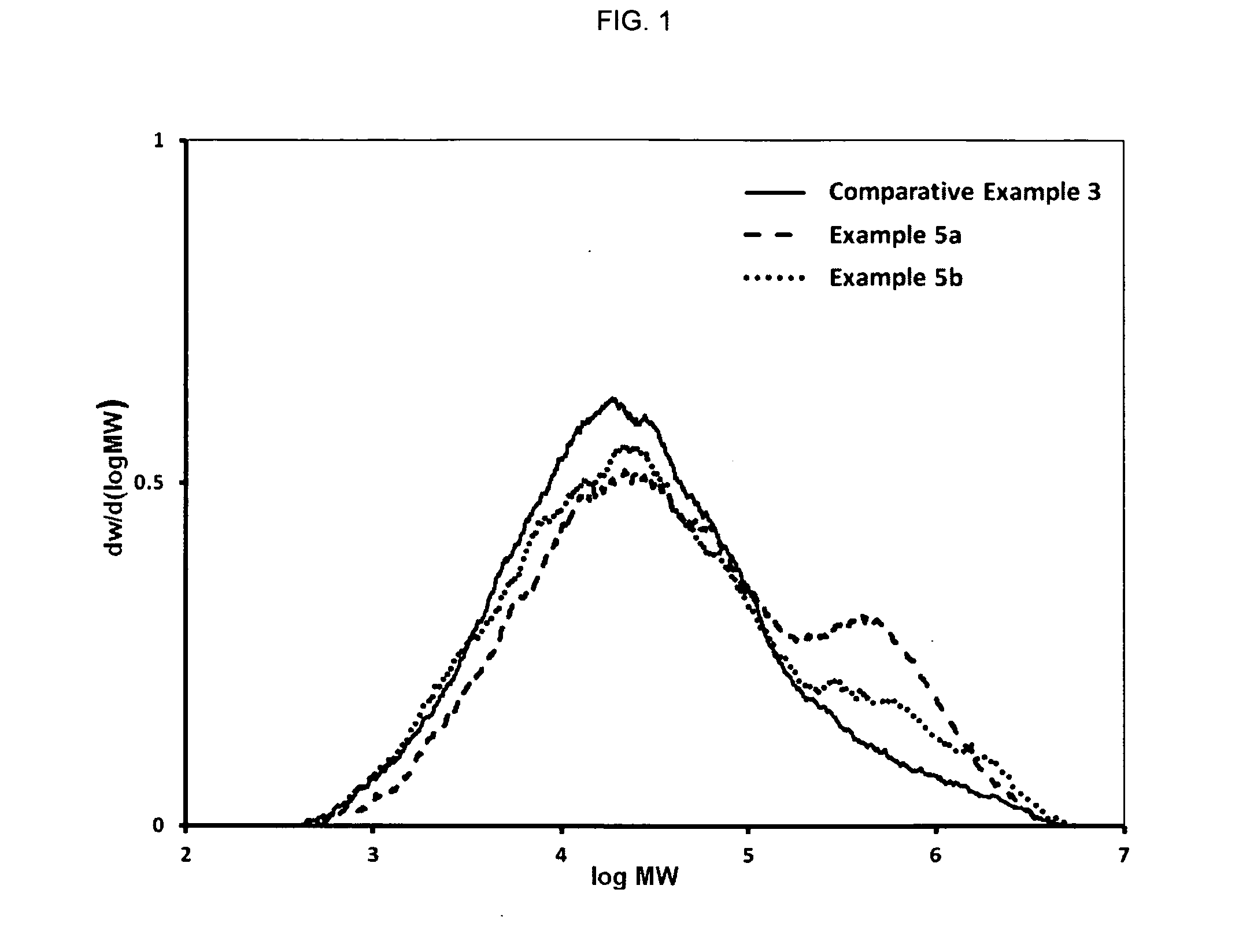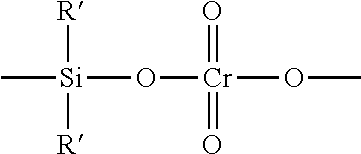Method of controlling polymer architecture
a polymer architecture and polymer technology, applied in the field of ethylene polymerization, can solve the problems of unsatisfactory polymer composition, poor homogeneity of polymers, and no teaching of the relative effect of carbon dioxide on chromium catalysts and group 4 based single site catalysts
- Summary
- Abstract
- Description
- Claims
- Application Information
AI Technical Summary
Benefits of technology
Problems solved by technology
Method used
Image
Examples
example 2
[0179]Example 2 was carried out analogously to Example 1, except that 20 ppm of CO2 was added to the reactor. Example 2, shows that a supported group 4 single site catalyst (e.g. a supported group 4 single site catalyst having at least one phosphinimide ligand) has significantly reduced activity when polymerization is carried out in the presence of carbon dioxide.
example 4
[0181]Example 4 was carried out analogously to Example 3, except that 20 ppm of CO2 was added to the reactor. Example 4, shows that a supported chromium catalyst (e.g. a supported silyl chromate catalyst) shows only a negligible decline in activity when polymerization is carried out in the presence of carbon dioxide.
example 5a
[0182]This example was carried out analogously to Example 3, except that 187 g of the silica-supported combination catalyst prepared as described above was used instead of the silica-supported chromium catalyst.
PUM
| Property | Measurement | Unit |
|---|---|---|
| wt % | aaaaa | aaaaa |
| wt % | aaaaa | aaaaa |
| weight average molecular weight | aaaaa | aaaaa |
Abstract
Description
Claims
Application Information
 Login to View More
Login to View More - R&D
- Intellectual Property
- Life Sciences
- Materials
- Tech Scout
- Unparalleled Data Quality
- Higher Quality Content
- 60% Fewer Hallucinations
Browse by: Latest US Patents, China's latest patents, Technical Efficacy Thesaurus, Application Domain, Technology Topic, Popular Technical Reports.
© 2025 PatSnap. All rights reserved.Legal|Privacy policy|Modern Slavery Act Transparency Statement|Sitemap|About US| Contact US: help@patsnap.com



